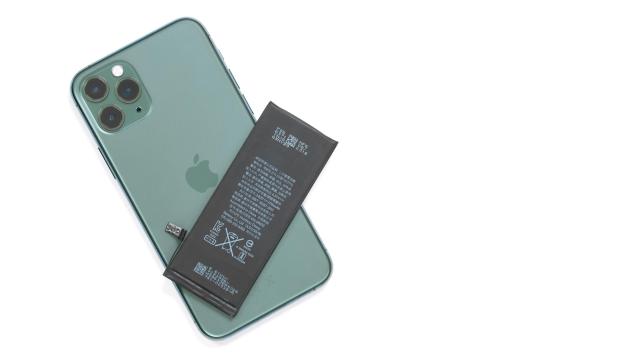Your old iPhone is feeling its age; apps crawl to open, animations couldn’t be choppier, keyboards lag like no one’s business. Before you throw in the towel and upgrade to the latest and greatest Apple device, consider simply upgrading the battery instead.
It’s possible your old iPhone is a perfectly good iPhone, even in 2021, it’s just that the battery is a dinosaur. As explained in this post, batteries age (even with “perfect” use), and, as they age, they stop holding their initial maximum charge.
An iPhone that’s four, three, or even just two years old can have batteries that feel like they can’t be trusted past your morning cup of coffee. But it’s not just battery life that takes a dive here; it’s your entire iPhone experience.
Why an old battery slows down your iPhone
Apple’s hardware and software can be so demanding on an ageing battery that your iPhone can unexpectedly shut down under too much activity. In order to avoid this from happening frequently, Appleautomatically underclocks (slows down) your iPhone’s processor, giving the battery a break at the cost of performance.
The company actually got into some hot water about this strategy years ago, since they — oops — didn’t actually tell anyone about it. Users had speculated for years that Apple was slowing down their older iPhones on purpose, and even with a solid reason behind it, it wasn’t a good look when it was confirmed to be true.
Apple didn’t change its ways after this scandal broke, but it did become more transparent about them: You now have access to on-device battery tools that can let you know if a simple battery replacement will speed up your iPhone.
How to check your iPhone’s battery health
Head over to Settings > Battery > Battery Health. Here, you can see your iPhone battery’s “Maximum Capacity,” which is a measurement of how much charge the battery can hold compared to when it was new. If your maximum capacity is 78%, for example, then charging your battery to 100% is really like operating at 78% when you first got the phone. Not ideal.
Now, check “Peak Performance Capability.” If everything is running as it should, you’ll see “Your battery is currently supporting normal peak performance.” However, you might see the following instead:
This iPhone has experienced an unexpected shutdown because the battery was unable to deliver the necessary peak power. Performance management has been applied to help prevent this from happening again. Disable…
That means that, at some point, your battery was too weak to handle your iPhone’s full potential, resulting your iPhone shutting down unexpectedly. In response, iOS underclocked the processor, helping the battery while, at the same time, driving you insane.
What you can do about it
You can disable this slowdown by tapping “Disable,” theoretically restoring your iPhone to full speed, but know that you’re risking another unexpected shutdown in the future. To avoid repeating this process over and over again, the more solid solution is not to get a phone, but simply to replace the battery altogether.
It won’t break the bank, either: Even with services provided by Apple, a new battery will run you $US49 ($66) or $US69 ($93), depending on your iPhone model. Compared to the price of buying a new iPhone, replacing the battery is a steal, and it’ll speed everything back up again.
Even after the coming launch of iOS 15, Apple will be supporting iPhones that were released as far back as 2015. It’s never been easier to hang on to your old tech and avoid spending serious cash on a new device you don’t really need. If all it takes to make your iPhone 6S usable six years after you bought it is a $US49 ($66) battery upgrade, that sounds like a no-brainer to me.

Leave a Reply
You must be logged in to post a comment.